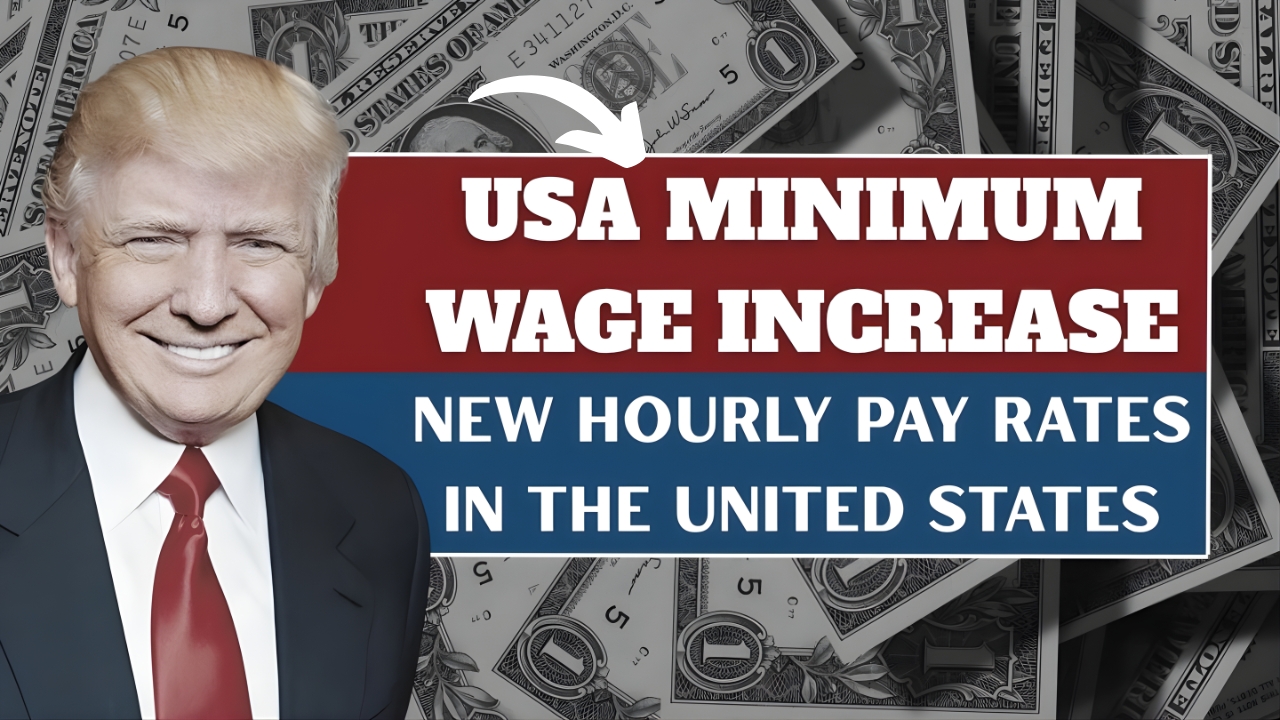The minimum wage situation in the United States has been revised substantially to 2025, and most state governments have raised the amount of money paid per hour to account for the escalating cost of living and inflation. Although the federal minimum wage is at the same level as it was in 2009, i.e. $7.25 per hour, many states and local jurisdictions have implemented higher minimum wages among workers. These reforms are meant to see that the wages are kept up to date with the economic realities encountered by millions of Americans.
2025 Minimum Wages by State
| State | 2025 Minimum Wage | Notes |
|---|---|---|
| Federal | $7.25 | No change since 2009 |
| Washington D.C. | $18.00 (from July 1) | Highest district-wide rate |
| California | $16.50 | Varies by city jurisdiction |
| New York (NYC) | $16.50 | Applies in NYC, Long Island, Westchester |
| Florida | $14.00 (from Sept 30) | Scheduled increase mid-year |
Federal Minimum Wage has not been increased.
The federal minimum wage, which is provided by Fair Labor Standards Act (FLSA), remains at the level of $7.25 an hour in 2025. This wage rate has not been rising since 2009 because the increase cannot be made without congressional approval which is yet to happen. The federal rate is a minimum on which other states base their minimum wages, but in areas where local minimums are greater, employers will be required to pay the greater amount. A few states such as Alabama and Wyoming follow the federal standard or their state minimum wage is lower than the federal standard.
There are some states that have increased their minimum wage by a large margin by 2025. However, as an example, Washington D.C. will raise the minimum wage to $18.00 per hour by July 1, 2025, the highest rate in the country by state or district. The state of California has a minimum of $16.50 statewide with New York City and the surrounding areas having a similar rate of 16.50. Other states that have recorded significant growths are Connecticut at 16.35 and New Jersey where minimum can be up to 15.49 to the larger companies[1].
Across states and localities, variations occur in the methods used to calculate property taxes, employing property tax credit and property tax exemptions (Gilman, 2013). The differences are witnessed between states and localities in the process of determining property taxes, whereby property tax credit and property tax exemptions are used (Gilman, 2013).
The laws on minimum wages are diverse as most states and cities have their own laws. Others are automatically raised on an annual basis based on inflation to make sure that wages are increased with the cost of living. Conversely, states that lacked minimum wage or set less state minimum wage regress to the federal wage. Besides, some local jurisdictions like Burien and Tukwila in Washington State have established local minimums of more than 20 per hour on large employers, which exceeds most statewide minimums in the same category.
Impact and Future Trends
The quilt of minimum wage rates in the nation is an indication of the current controversies of the right wage bottom to sustain employees. There is a slow but steady rise in wages across many states, with targets of a minimum of $15 or higher because it is being recognized that the federal wages are not enough to support many families. Wage increase policies will likely be a major concern in 2025 and further due to inflation on the cost of living that consumers are still experiencing in the present day.
Frequently Asked Questions
1. How come that the federal minimum wage has not been raised since 2009?
Only a congress can increase the price of minimum wage by a law, and regardless of debate no bill has been passed to raise the minimum wage since 2009, keeping the minimum wage at the same level of $ 7.25 per hour.
2. What is the maximum minimum wage in 2025?
Washington D.C. is first in the list of the states with an announced rise to $18.00 per hour as of July 1, 2025. In Washington State, large employers have their minimum wages being higher in some local cities[1].
3. Do they increase minimum wages in line with inflation?
The federal level is not the case, 19 states and the D.C. have legislation that automatically updates the minimum wage yearly with inflation to keep up with the workers purchasing power over the years[1].
This summary points out the differences in the ways in which minimum wage changes in 2025 will differ across the United States with local and state governments leading the way in raising wages as the federal minimum wage does not increase. Both the workers and employers are expected to be abreast of the changes in the local laws to ensure that they are being met and they are paid adequately.



